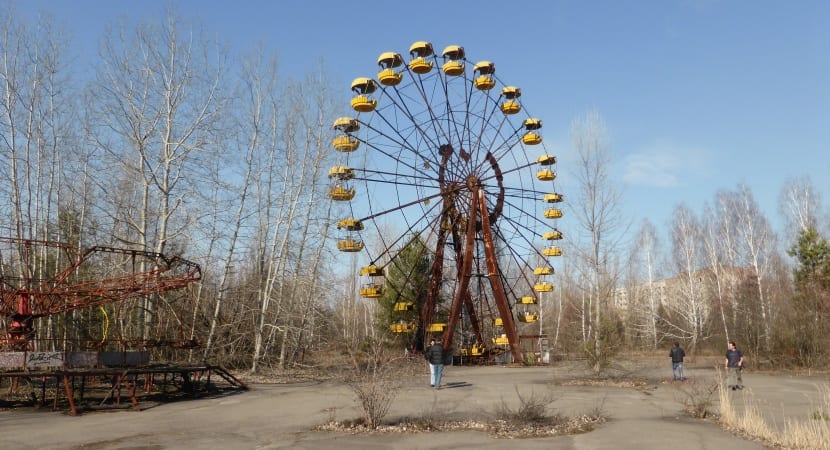
The day came, the day we visited Chernobyl and the nuclear alignment and exclusion zone.
A unique day that we will surely never forget. An excursion where we would see everything that remains after the disaster of 1986.
We met at 8 in the morning in Maydan Square, in the heart of Kiev, where the agency's van and the guide were waiting for us.
They had to gather all the tourists from 3 different days in a single day due to military maneuvers by the army in the area. We later found out that a false bomb warning actually occurred!
In total we would be about 12 tourists of multiple nationalities.
Entry into the nuclear exclusion zone
2 hours walk they separated us until the first check-point military. There first passport control and visitor registration. We were already in the 30 km perimeter circle to the nuclear power plant.
First we visited a totally abandoned town where only an 85-year-old woman lived, before the disaster 4000 were the inhabitants. It was a ghostly town. All the houses had been "eaten" by the forest. Everything was destroyed. Obviously there was no electricity, gas, water or anything. It was difficult to understand that this woman lived there, not only because of the isolation but because of the health risk (I remind you that we are within the perimeter with nuclear contamination).
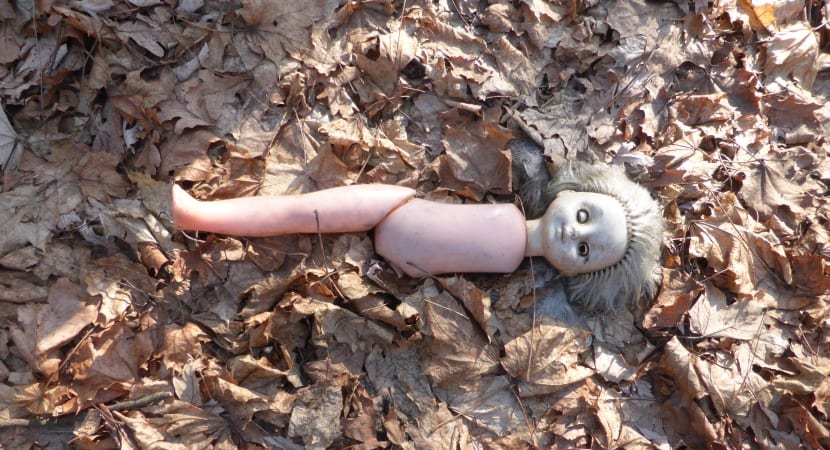
Then we continue on the road until we reach the old town of Chernobyl. In the past thousands of inhabitants, now few hundred, almost all engineers and military dedicated to decontamination. A town turned into a sanctuary and I remember the victims.
Then we go to the next check-point, 10 km from reactor 4. From this point it is not possible to live, the levels of contamination in certain areas are very high.
Chernobyl, history of a disaster
Just as we crossed this line we visited an abandoned nursery. Everything was left as the guests left it at the time of the disaster. The guide's meter already marks very high levels of radiation. We can only be on this site for a few minutes for security reasons. Everything we see looks like something out of a horror movie, it's very impressive, it's even scary. Around the building we see posters of nuclear contamination.
A couple of kilometers further on we take a path to the left, it takes us to the Soviet radar / anti-missile shield DUGA-3, better known at the time as the «Woodpecker». Right now it is a huge wall of rusted iron in the middle of the forest, 146 meters high by hundreds of width. It was designed to detect possible missiles coming from the west.
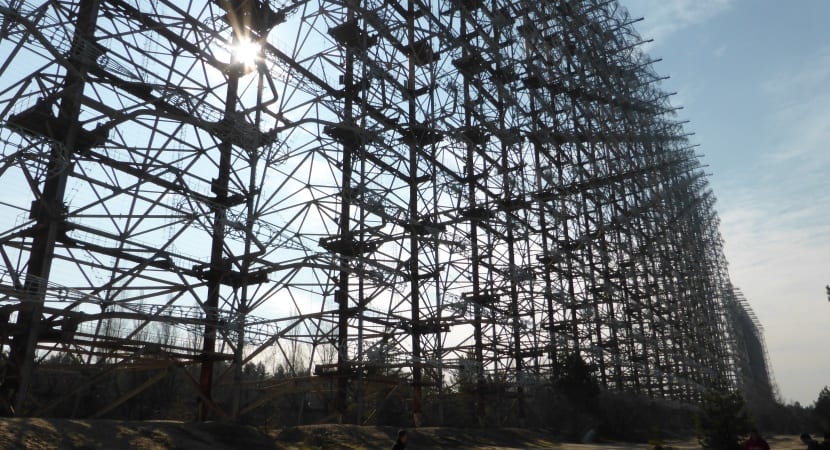
We return to the main road and arrive in a few minutes at the Chernobyl nuclear power plant. Pollution levels are already high.
Nuclear power plant
We go through each reactor about 100 meters until we reach the reactor 4, the one that exploded. Here we stop to take photos and contemplate the adjoining building, called the sarcophagus, destined to bury reactor 4 permanently and thus reduce radiation levels completely. We can see that dozens of engineers and soldiers work every day for such a task.
Just across the road we see the Red Forest, one of the most contaminated points. A forest whose trees turned red from radiation. Everything that grows makes it polluted, it has to be cut.
It is at this moment that I realize that I am right in front of the Chernobyl nuclear power plant, whose explosion caused one of the worst disasters in recent history. A cluster of sensations runs through my body: sadness, emotion, ... I was totally shocked by what I saw.
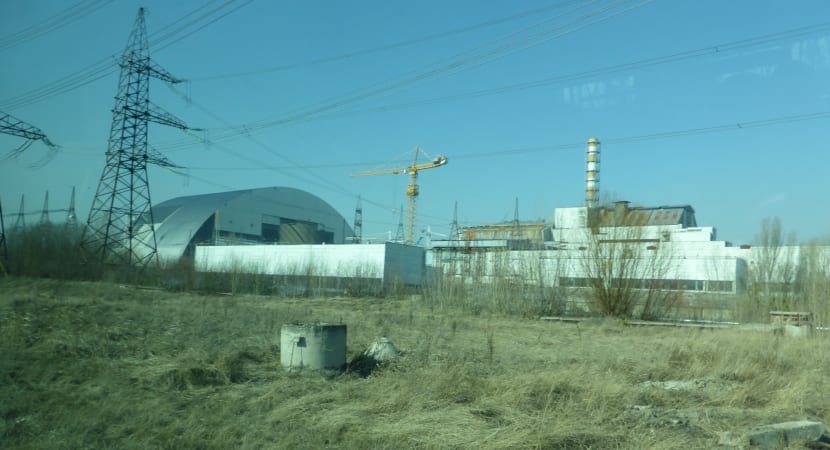
Next we come to the famous entrance sign to the ghost town, Pripyat 1970, and the bridge that connects the area of the nuclear power plant with the population.
Pripyat, the ghost town
Pripyat was once one of the most modern and best cities to live in in the former Soviet Union, it was a source of pride for the country. At the time of the disaster there were 43000 people living, now no one.
A last military man checks our accreditations and raises the barrier for us to visit the town. The first thing we see is the main avenue turned into forest and totally abandoned and half-destroyed huge Soviet buildings.
5 minutes down this street and we arrive at the main square. From there we visited the old supermarket, the theater and passed by the side of the hotel. All rusted, leaky and with the feeling that one day it will collapse.
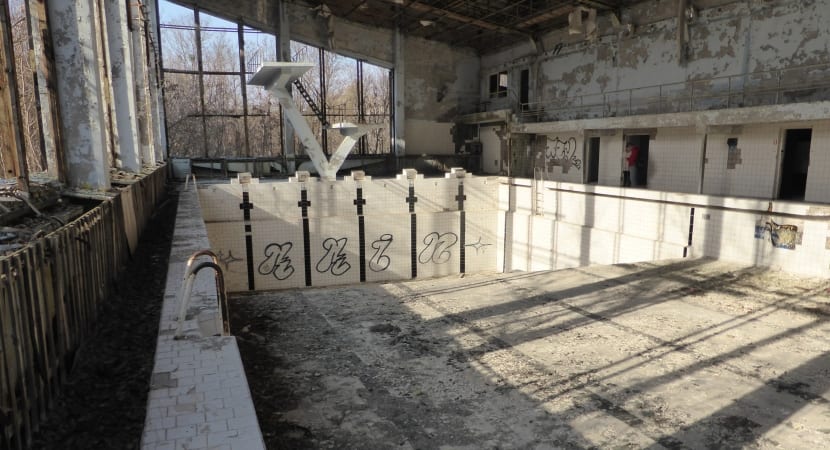
A few meters later we arrive at the area of the Ferris wheel and the bumper cars, surely the most typical image of Pripyat that we see on the Internet. Radiation is high here.
We take a tour of this part of the city. Again the feeling of being in a horror movie comes to me, but now mixed with the feeling of a video game, all very strange and sad, very impressive.
Next we go to another important point, the gym. There we visited the entire building, including the swimming pool, the gym and the basketball court. All destroyed. As we walk we see rooms with gas masks on the floor.
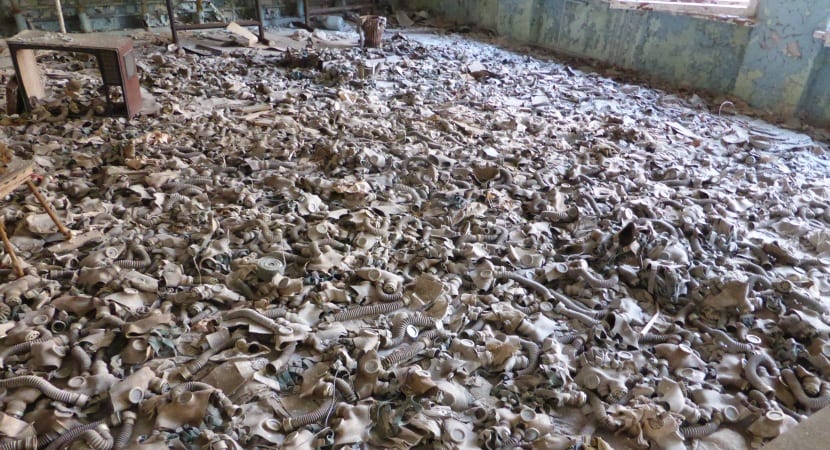
At the end of the route we return to the town of Chernobyl and eat in the canteen, the only place in the area where you can eat and sleep.
On the way to Kiev, the agency and the guide can show us a documentary on the television in the van. It corresponds to the life of the inhabitants of Pripyat months before the disaster. It gives us proof of how they lived and what it all became. We can compare what we see on TV with respect to what we have just seen on-site.
It was so shocking and so different what we had experienced with the excursion that we were not aware of what we had experienced until the day was over. Already in the apartment in Kiev and in subsequent days we reviewed everything we saw and how impressive it was.
Yes, we had gone to the Chernobyl nuclear power plant!